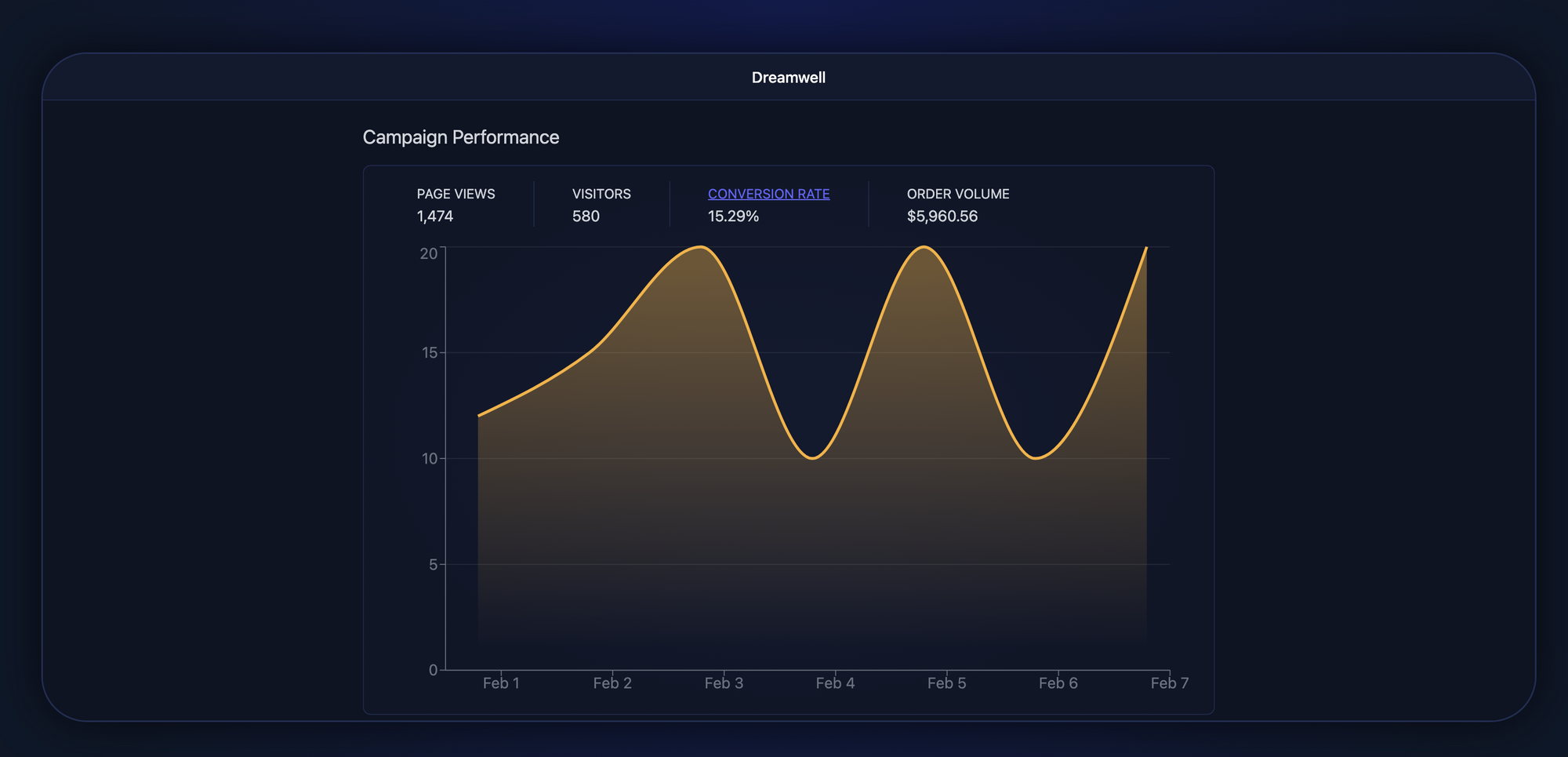Understanding your Conversion Funnel
What is a conversion funnel and how can we use it to track campaign performance?

The Dreamwell Pixel provides us with valuable insights into the journey of your customers. But to make sense of that journey, we need to understand it in the context of a conversion funnel.
What is a Conversion Funnel?
A conversion funnel is a representation of the path customers take before purchasing something from your site. In e-commerce, it typically starts when customers become aware of your product and ends when they make a purchase. Think of it as the digital equivalent of the path a customer takes walking into a physical store, browsing, selecting items, and finally, making a purchase at the checkout counter.
The conversion funnel isn't a one-size-fits-all model, though. It will vary based on the nature of your business, the complexity of your product or service, and the buying behavior of your customers.
Why is this important for us?
Because Dreamwell needs to know these entry and conversion points for each brand deal you have in order to help you measure and optimize. Entry points could take various forms: unique URLs for each deal, unique discount codes, or even UTM parameters attached to the links that visitors use to arrive at your site. For our brands on Shopify, conversion points are tied to each order placed, and other sites can configure a custom funnel using our APIs directly.
This level of detail allows us to understand which of your brand deals are most effective at driving traffic and generating conversions, and optimize accordingly. In other words, the funnel becomes a tool for tracking, measurement, and ultimately, improvement.
So now that we have our pixel set up and a basic understanding of our conversion funnel, we're ready to start tracking conversions in a meaningful, data-driven way.
